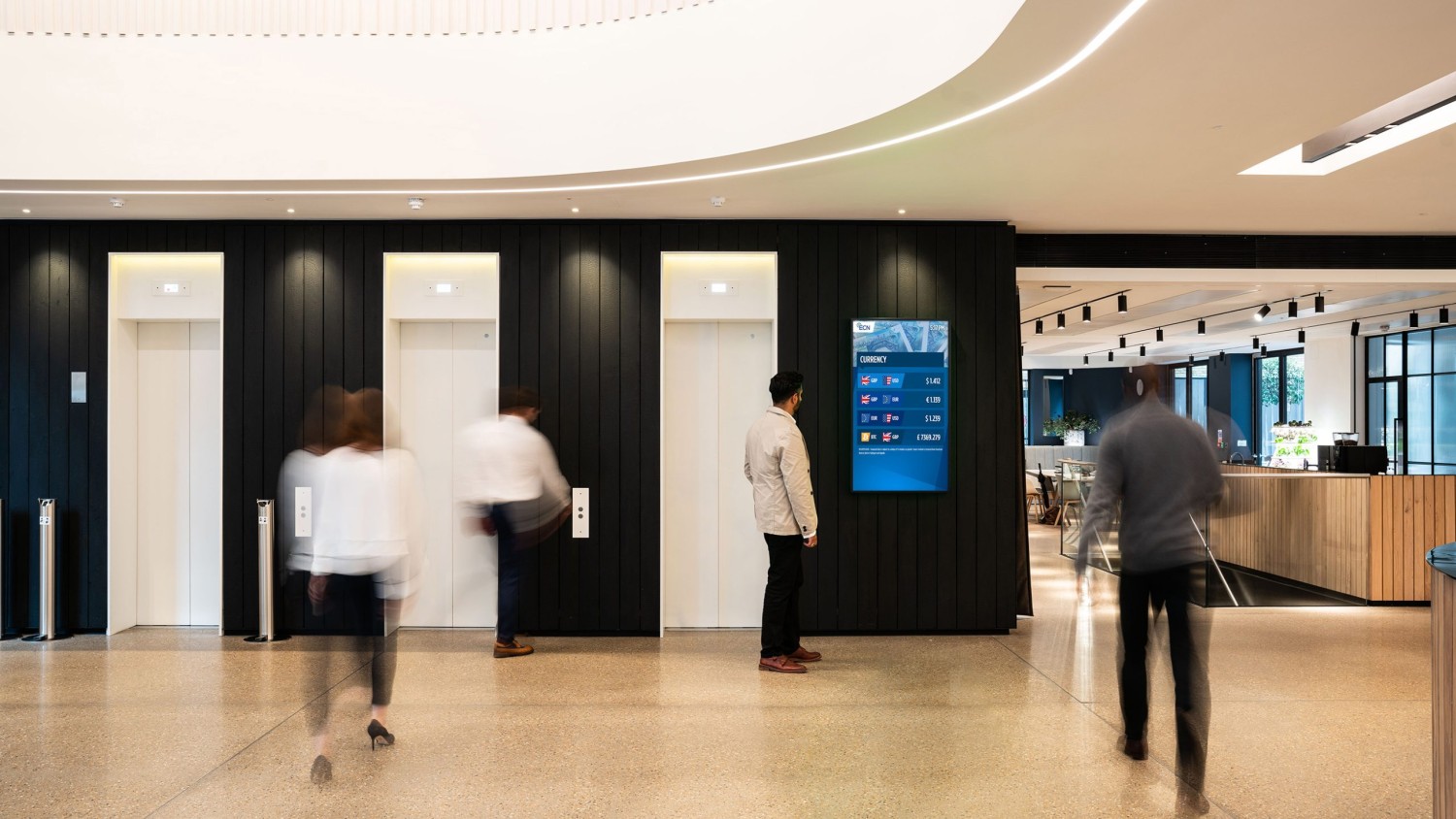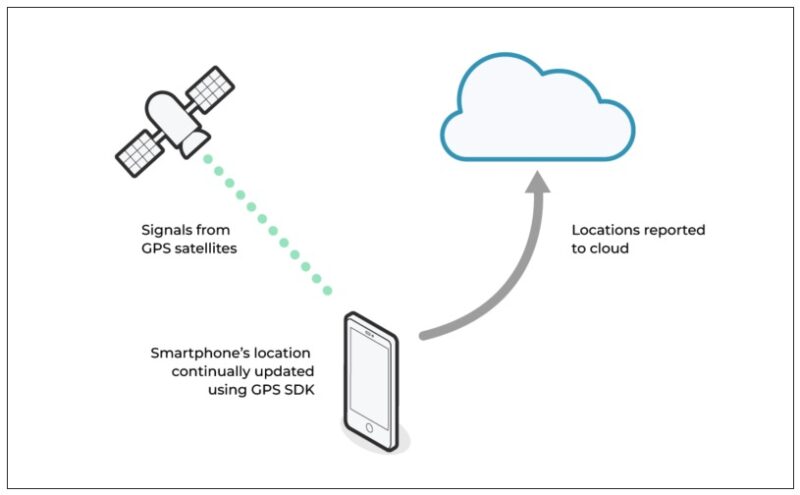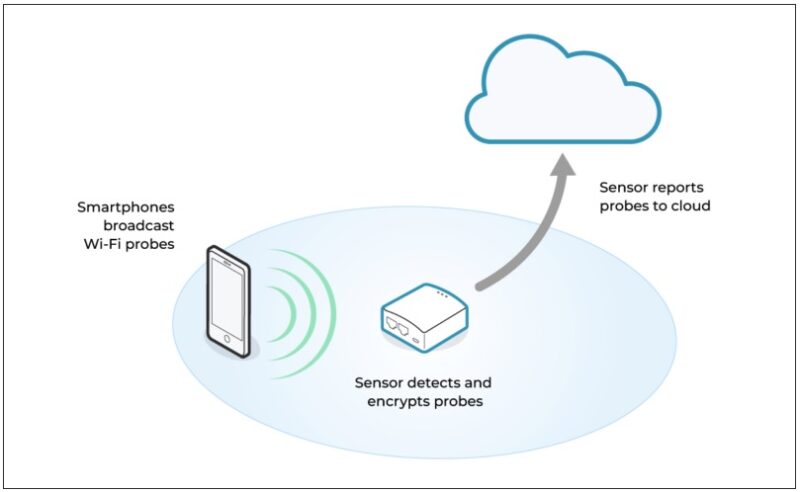
How WiFi-Hungry Smartphones Enable Audience Measurement For Digital Ad Networks
October 6, 2023 by Dave Haynes
Guest Post: Bill Evans, BlueZoo
 All OOH businesses require an accurate measurement of OOH impressions, but the vast majority of impressions may never be captured. That costs you money.
All OOH businesses require an accurate measurement of OOH impressions, but the vast majority of impressions may never be captured. That costs you money.
Measuring advertising audiences lets media owners prove that advertisers are getting the impressions they pay for. At the same time, measurement reassures media owners that advertisers are paying for all impressions delivered. Both sides of the transaction value accurate measurement.
The advent of the smartphone introduced two new techniques for audience measurement: that’s the good news.
The bad news is that Google and Apple, in defense of consumer privacy, have taken steps that are hobbling the more widely-used technique. Let’s look at these two techniques.
SMARTPHONES AND GPS
The first technique to appear after the introduction of smartphones was the use of mobile apps, typically distributed as freeware, to track the minute-by-minute location of a consumer. Such apps embed an SDK (software development kit) that uses the mobile phone’s GPS radio to track the phone’s location. SDKs deliver fine-grain location data to brokers like SafeGraph, who provide it to organizations like Geopath
Historically, this ecosystem has served advertisers well.
- First, GPS radios in smartphones deliver location accuracy within 5 meters where GPS satellites are visible (i.e. outdoors);
- Second, the same app that monitors the phone’s location can often glean a great deal of information about users, sold in aggregated form as demographics, or even about individuals;
- Third, the data provided by brokers has been inexpensive.

APPLE AND GOOGLE REACT TO DEFEND CONSUMER PRIVACY
A side-effect of this measurement ecosystem is a loss of consumer privacy. Even though a consumer may have said “Yes, let this weather app know my location so I can get personalized forecasts“, the apps do not disclose—or do so only in very fine print—that location and personal data will be resold. And while aggregated data may be anonymized, the ecosystem shares non-anonymized location data, as well. Mainstream media, including the New York Times and Time Magazine, have covered the subject repeatedly.
Because these location tracking mobile apps are now perceived as privacy-unfriendly, Apple and Google are limiting their access to consumer location information.
Today, the standard choices for location tracking on iOS and Android are “Don’t allow”, “Ask every time”, and “Allow only while using the app.” Since Android 11, released in 2020, “Allow all the time” can only be granted explicitly from the app settings. As a result, fewer and fewer customers are tracked, leaving users of this data to apply larger multipliers to smaller sample sizes. The end result is that audience measurement accuracy has massively eroded, because only 5% to 10% of consumers are measured.
WI-FI SENSORS AND “CHATTY” SMARTPHONES
The second technique smartphones make possible is the use of passive Wi-Fi sensors to detect and count phones. This technique does not require any app or SDK on the phone and relies on the fact that both Android and iOS phones use their Wi-Fi radios to probe spontaneously and incessantly, searching for Wi-Fi access points. This means that you can reliably count people by simply listening for and counting their chatty smartphones.
The passive Wi-Fi technique uses a sensor with a Wi-Fi radio to listen passively for probes from smartphones. The probe’s received signal strength reveals the smartphone’s distance from the sensor, up to 300 feet. The size of a sensor’s detection zone can be shaped by pairing different kinds of antennas with the sensors. Omni-directional antennas deliver a spherical detection zone of variable radius; directional antennas deliver a conical detection zone of variable cone length.

While passive Wi-Fi is ideal for measuring foot traffic both indoors and outdoors, it is less well-suited for measuring highway traffic, where fast-moving vehicles may escape detection.
Passive Wi-Fi was pioneered in 2013 by LINKETT in Ontario, Canada, using a Raspberry Pi as the sensor. Later, my company BlueZoo developed less expensive sensors by moving computation to the cloud.
REAL TIME MEASUREMENT MAKES AUDITS EASY
The good news is that passive Wi-Fi sensors see and count virtually everyone with a phone, rather than the single-digit percentages of smartphones using GPS SDKs. This large sample means that accurate counts can be reported continuously, even in real time, which is ideal for programmatic DOOH (pDOOH).
Unlike GPS-based solutions, passive Wi-Fi is privacy friendly, even by the standards of Europe’s GDPR regulations.
Passive Wi-Fi sensors learn a smartphone’s MAC address, but never any personal information like the consumer’s phone number, location history, or Mobile Ad ID (MAID). The MAC address cannot be shared because it never leaves the sensor, making the solution good for consumer privacy and regulatory compliance.
While passive Wi-Fi fails to collect demographic information, demographic patterns change relatively slowly and measuring an audience’s demographic profile is possible by means less privacy-invasive.
Finally, due to real-time measurement, audits are easy and inexpensive. Passive Wi-Fi delivers a consistent measurement of audience size, revealing changes within a day and across years.
If you want a real world demonstration of consistency, JCDecaux used passive Wi-Fi to measure the evolution of the Covid pandemic in Hong Kong from January 2022 through June 2023.
MORE CHANGE ON THE HORIZON
The landscape of audience measurement technologies has changed dramatically with the advent of smartphones. Annual audits have become a thing of the past, replaced by alternatives more accurate than cellular measurements and less invasive than cameras.
However, the accuracy of solutions that depend on smartphone apps using GPS to track consumers will continue to erode, as consumers restrict location tracking and sample sizes shrink as a result. Solutions that respect consumer privacy, and avoid limits imposed by the smartphone makers and regulators, will have a long-term edge.
Industry stalwarts like Geopath will do well to leverage these new technologies for impressions measurement, to complement their existing strategies for understanding consumer demographics and behavior that can be meaningful with smaller samples.
Finally, some argue that poor impression measurement accounts for the low CPMs assigned to out-of-home (OOH) advertising. Indeed, more consistent and accurate impressions data could raise the value of OOH, accelerating the growth of digital OOH.
ABOUT THE WRITER
Bill Evans is the CEO of BlueZoo, a Silicon Valley tech firm with technology that measures the presence and movement of people, using smartphones as a proxy. BlueZoo’s technology passively collects Wi-Fi probes from smartphones to measure the number of visitors, visits, unique visitors, recurring visitors, and multiple other metrics.



It’s true that Wi-Fi is still being emitted by smartphones but you cannot use it to identify unique devices anymore. Even if only used for counting (i.e. how many wi-fi MAC’s I saw at time x) you would never know if you’re seeing the same device twice or just two separate MAC addresses.
It is true that most new smartphones probe for Wi-Fi access points using 802.11 local (sometimes called randomized) MAC addresses, where the second bit of the first byte of the MAC address is set. The current share of mobile phones in circulation that probe with local MAC addresses varies in a range from about 10% to 25%, depending on world geography. (BlueZoo knows because we track this number.)
C. Riegel is absolutely right that the advent of local MAC addresses (an innovation by the smartphone OS designers) makes it impractical to track phones as has been done in the past. Edward Snowden precipitated this innovation by revealing the privacy-unfriendly habits of some US government agencies. Still, even samples smaller than 9% of typical OOH traffic are sufficient to determine both unique visitor recurrence rates and dwell times at a daily grain.
The problem for visit and visitor counting is much less severe. C.Riegel remains correct that you can’t generally know for certain if two different local MAC addresses belong to the same phone. Nonetheless, the calculation of visits and visitors is essentially a stochastics problem, one that is solved by knowing the probability distribution of probe interarrival times and of local MAC address lifetimes. BlueZoo’s sensor calibration process accounts for both probability distributions.
The real proof is in the pudding: BlueZoo customers have tools to collect ground truth for purposes both of calibration and auditing. Indeed, our tools for on-site audits of impression measurements set BlueZoo apart from GPS-based solutions. With more accurate and auditable impressions measurement, our community can raise CPMs, accelerating the growth of our market.
And then there are the trackers — https://kioskindustry.org/browsing-trackers-eat-your-lunch/